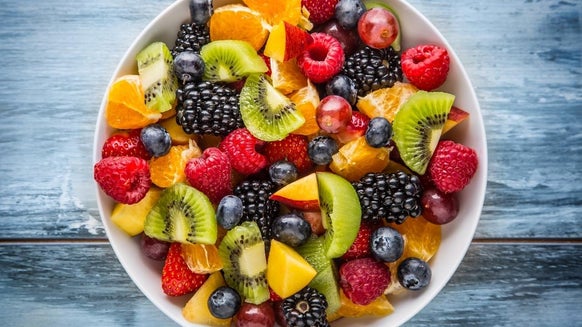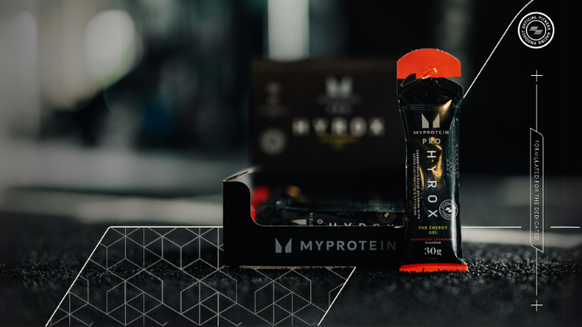
For many, “food noise” — constant thoughts about eating, cravings, and the urge to snack — can make it difficult to maintain a balanced diet.
Recently, GLP-1 medications, such as liraglutide and semaglutide (perhaps better known by the brand names Ozempic and Wegovy), prescribed for weight loss, have emerged as powerful tools for appetite control, helping to quiet food noise by regulating hunger hormones and slowing digestion.
While these medications can significantly reduce cravings, they’re not a guaranteed fix, and some individuals may still struggle with hunger, nutrient deficiencies, or energy dips. Understanding how to properly fuel your body while on GLP-1 treatments is key if you want to get optimal results while maintaining good health.
What is Food Noise?
Food noise refers to intrusive thoughts about food that can make it difficult to focus on anything else. It could involve persistent cravings, obsessive meal planning, or a preoccupation with what, when, and how much to eat. This mental chatter is often influenced by factors like blood sugar fluctuations, inadequate nutrition, restrictive dieting, habitual eating patterns, and even emotional triggers.
For some, food noise is occasional, while for others it can be constant and interfere with daily life. It can become part of an ongoing feedback loop of unhealthy behaviours and internal narrative that can lead to overeating.
How Do GLP-1 Medications Help Reduce Food Noise?
GLP-1 medications may help manage food noise by stimulating hunger hormones to regulate appetite and reduce cravings. Mounjaro, a GLP-1 treatment, works by mimicking both GLP-1 (glucagon-like peptide-1) and GIP (glucose-dependent insulinotropic polypeptide), gut hormones that influence blood sugar control and appetite.
Another effect of GLP-1 medications is their effect on gastric emptying. They help you feel full for longer, reducing the frequency and intensity of intrusive thoughts about food. They also influence the brain’s reward response to food, making highly palatable, processed foods seem less appealing.
Tips to Help Manage Food Noise
Managing food noise with your diet involves eating nutrient-dense foods that fill you up, stabilize blood sugar levels, and reduce cravings.
Protein-rich meals are useful for curbing food noise because protein takes longer to digest, keeps you full for extended periods, and helps regulate hormones like ghrelin and GLP-1.1
High-quality protein (such as lean meat, fish, eggs, dairy, tofu, and legumes) can prevent energy crashes and reduce the urge to snack excessively.
Starting the day with a protein-packed breakfast (like Greek yogurt with berries and nuts or scrambled eggs with avocado) can set the tone for sustained energy and fewer cravings throughout the day.
High-volume diets focus on increasing the quantity of food consumed without adding excessive calories, helping to create a sense of fullness. Essentially, it’s aiming to have the same amount of relative energy intake with a greater total volume of food consumed.2
Foods with a high fibre and water content — leafy greens, cruciferous vegetables, berries, and broth-based soups — allow for larger portion sizes while keeping calorie intake in check. Pairing high-volume foods with protein ensures meals are satisfying and can help reduce absent-minded snacking and even the constant preoccupation with food.
You should also ensure you’re paying attention to your fluid intake, which plays a crucial role in managing food noise. Dehydration can sometimes be mistaken for hunger, so drink water regularly and consume hydrating foods (such as cucumber, watermelon, and berries) to try to keep a lid on food cravings.
What Foods Can Help?
Certain foods can be especially effective in reducing food noise, often by promoting satiety, stabilizing blood sugar levels, minimizing cravings, or a combination of these effects.
Protein-rich foods & snacks
- Lean meats, poultry, and fish: Chicken breast, turkey, lean beef, and fish (especially salmon and tuna) provide high-quality protein that keeps you full longer.
- Eggs: A great source of protein and healthy fats that help regulate hunger hormones.
- Dairy: High in protein and probiotics, dairy (especially Greek yogurt, low-fat cheese, and cottage cheese) support gut health and keep cravings at bay. Many dairy products will provide similar benefits.
- Edamame and roasted chickpeas: Protein-packed, plant-based snacks that offer fibre and crunch.
- Protein bars and shakes: Look for options with at least 15-20g of protein and minimal added sugar.
High-volume, fibre-rich foods
- Leafy greens: Spinach, kale, lettuce, and more help to add bulk to meals with minimal calories.
- Cruciferous vegetables: Broccoli, cauliflower and Brussels sprouts are filling and nutrient-dense.
- Berries: Strawberries, raspberries, and blackberries provide fibre and natural sweetness to curb sugar cravings.
- Chia and flax seeds: Rich in fibre and omega-3s, they expand in the stomach and promote fullness.
- Oats: A slow-digesting carb that stabilizes blood sugar and reduces hunger spikes.
Healthy fats for satiety
- Avocados: Packed with fibre and monounsaturated fats that help sustain fullness.
- Nuts and nut butters: Almonds, walnuts, and cashews provide a mix of protein, fibre, and healthy fats.
- Dark chocolate (85%+ cocoa): A small amount can help curb cravings without spiking blood sugar.
Other Important Lifestyle Factors
In addition to diet, lifestyle factors such as sleep, stress, and exercise play a crucial role in reducing food noise by regulating hunger hormones, stabilizing energy levels, and supporting overall well-being.
Sleep
One of the major lifestyle factors influencing hunger and satiety is sleep. Poor sleep is often a major driver of food noise, as it disrupts the balance of hunger hormones like ghrelin and leptin.
When sleep is inadequate, ghrelin levels rise, increasing hunger, while leptin levels drop, reducing feelings of fullness. This imbalance leads to stronger cravings, particularly for high-sugar and high-fat foods, making it harder to maintain control of eating habits.
Prioritizing 7-9 hours of quality sleep each night, maintaining a consistent sleep routine, and scheduling and creating a relaxing bedtime routine can help regulate appetite and reduce intrusive thoughts about food.
Stress
Another factor to consider is stress. Chronic stress triggers the release of cortisol, a hormone that increases cravings for comfort foods and promotes emotional eating. When stress levels are high, the brain seeks quick energy sources, often leading to increased food noise and a reliance on processed, high-calorie snacks.
Managing stress — through mindfulness practices, deep breathing, journalling, good sleep, regular exercise, or engaging in hobbies — can help break the cycle of stress-induced cravings.
Exercise
Finally, we can’t forget about the importance of regular exercise in regulating your hunger and satiety. Regular physical activity plays a crucial role in managing food noise by improving insulin sensitivity, stabilizing blood sugar levels, and supporting mental well-being.
Resistance training helps preserve muscle mass and boosts metabolism, while cardiovascular exercise, such as walking or cycling, can help reduce stress and improve mood through endorphin release. Even low-intensity movement, like yoga or stretching, can help regulate appetite and reduce emotional eating.
A well-balanced exercise routine that includes both strength training and movement for enjoyment can help curb cravings and reinforce a healthier relationship with food.
Take Home Message
Food noise can be incredibly difficult to manage and often contributes to ongoing unhealthy behaviours. GLP-1 medications can help reduce cravings, but they must be combined with balanced nutrition and a healthy lifestyle.

Paddon-Jones, D., Westman, E., Mattes, R. D., Wolfe, R. R., Astrup, A., & Westerterp-Plantenga, M. (2008). Protein, weight management, and satiety. The American journal of clinical nutrition, 87(5), 1558S–1561S. https://doi.org/10.1093/ajcn/87.5.1558S
Rolls B. J. (2017). Dietary energy density: Applying behavioural science to weight management. Nutrition bulletin, 42(3), 246–253. https://doi.org/10.1111/nbu.12280







